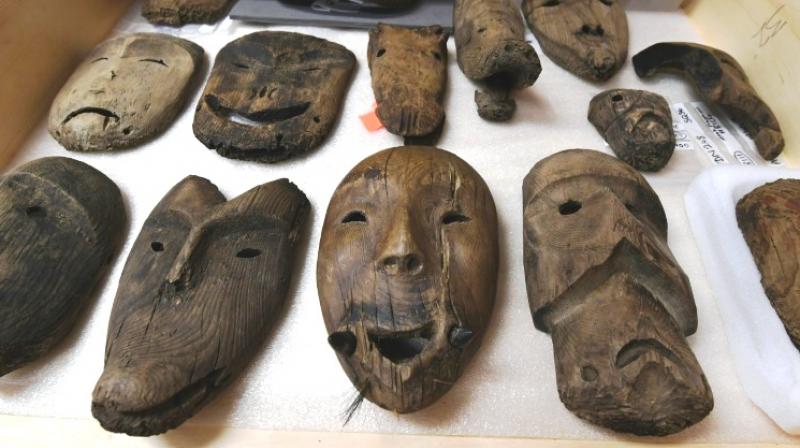Ancient artefacts melting under climate change
Archaeological sites in Alaska threatened by climatic change.

Washington: The first object, a wooden mask, was discovered by chance in 2007 by a child playing on a beach in Quinhagak, a rural village in western Alaska, along the Bering Sea.
In the following months, hundreds of other ancient artefacts emerged from permafrost, the layer of soil that was once frozen throughout the year, which covers much of this American state and is now melting under the climate change.
Baskets, sculpted harpoon handles, labrets (lip ornaments), statuettes, ivory needles for tattoos: these treasures belong to an ancient settlement of Eskimos Yupik and date back to some in the 17th century. Some 100,000 ancient Yupik artefacts, the largest collection in the world, are now stored in the small museum in Quinhagak.
"It's by far the most amazing thing I've ever seen in a 40-year career and I've worked on some pretty spectacular sites," says Rick Knecht, an archaeologist at Aberdeen University in Scotland.
For the last ten years, he has been leading the excavation team that is trying to save the relics of the site discovered five kilometres from Quinhagak and called Nunalleq, or "old village" in the Yupik language.
"Almost everything we know about prehistory Yupik comes from this site," says the archaeologist by visiting the excavations to an AFP team. "The people here would have lost a tangible connection with their past, which would have been an incredible tragedy," the affable scientist with a grey beard said.
While Knecht is looking forward to this windfall, he is also dismayed to think that other Yupiks deposits are probably disappearing throughout Alaska.
Because the permafrost that has protected these organic objects for centuries decreases inexorably. "You can see the ground liquefying, it's like a jar of ice cream," the scientist grumbles, pointing to the slimy mud on the banks of Quinhagak and the blocks of earth ready to be swallowed up.

